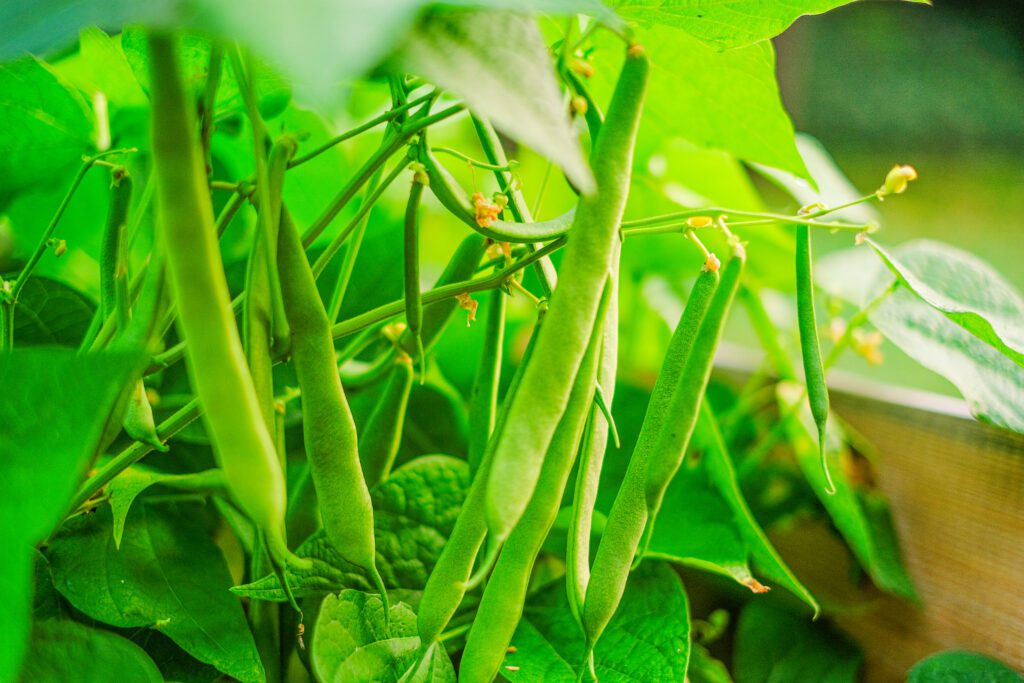by RYAN MILEJCZAK
Sponsored by Farm Credit of Central Florida
This Thanksgiving, households across Florida and the nation will be preparing snap beans for their holiday meal. But have you ever wondered where those snap beans come from? Well, there’s a good chance they were grown right here in Florida.
Snap beans, not to be confused with distantly related snap peas, are also known as string beans, green beans, or french beans. They take the name “snap bean” from the sound they make when cracked open. Whatever name you call them, snap beans are in fact the same plant as the common bean, Phaseolus vulgaris, which produces tasty treats like black beans and pinto beans. Besides the exact cultivars used, the only difference is that snap beans are harvested while still green and unripe, rather than fully mature like other beans.
There are more than 100 cultivars of green beans grown today, which fall into one of two groups: bush or dwarf types and pole or climbing types. As you might be able to guess from the name, bush type plants are short, bushy plants. They grow to maturity very quickly, and are the most common type for large commercial operations. Pole beans, meanwhile, grow as a climbing vine supported by trellises. There are many different varieties of both bush and pole snap beans which are well adapted to the Florida climate and widely grown across the state, including Bush Blue Lake, Rom II, Cherokee Wax, Contender, Provider, and Annihilator.
Snap beans, and all common beans, have their origins in Mesoamerica, where they have been cultivated for more than 7,000 years. They are one of the “three sisters” of indigenous agriculture, which involves companion planting of beans along with corn and squash. The plant first made its appearance in Florida in 1942, and soon, they spread throughout the U.S. and were also exported to Europe. The term “string bean” refers to the fibrous string that typically lines the bean pod; while this was once a common feature of most snap beans, by the 1950s, the vast majority of “string” beans were in fact stringless due to breeding programs started at the turn of the century.
Today, Florida is a leading producer of snap beans. As of the most recent available data for 2023, Florida cultivates 37,000 acres of snap beans, producing over 200 million pounds of snap beans, primarily for the fresh market. This represents a value of more than $123 million, and places us fifth in the nation for snap bean production.
Florida’s snap bean season runs from November to May, with peak season production occurring in February, March, and April. This makes Florida one of the leading producers of snap beans during the winter months. Most snap bean production is concentrated in North and South Florida in Alachua, Bradford, Miami-Dade, Hendry, Palm Beach, and Suwannee counties, but they can be found growing all across the state. Snap beans are also a popular garden plant, thanks to being easy to grow even in poor quality soils.
When shopping for fresh Florida snap beans, look for firm beans free of bruises or wrinkles. When cracked open, the snap bean should be firm but open easily and create an audible “snap” sound. Snap beans are highly versatile and can be enjoyed fresh, boiled, steamed, stir fried, or pickled, and of course, made into green bean casserole. However you prepare them, snap beans are healthy and low in calories, and are a good source of vitamins C, K, and B6, as well as fiber, manganese, and potassium.

